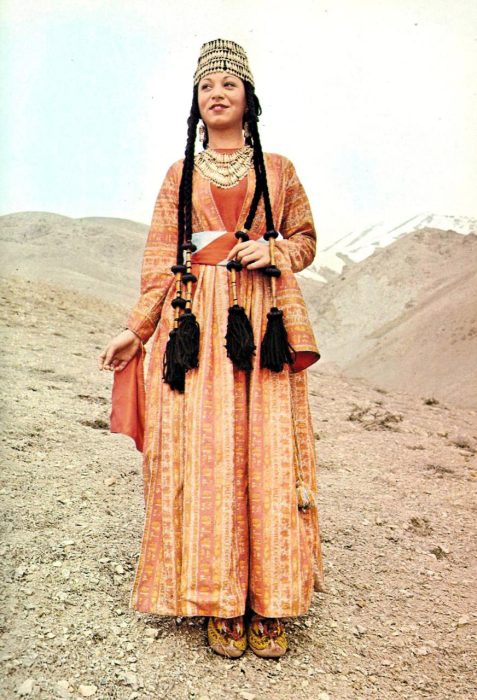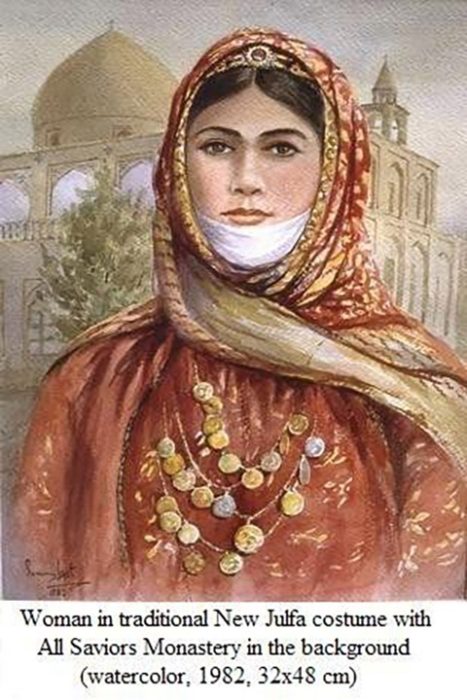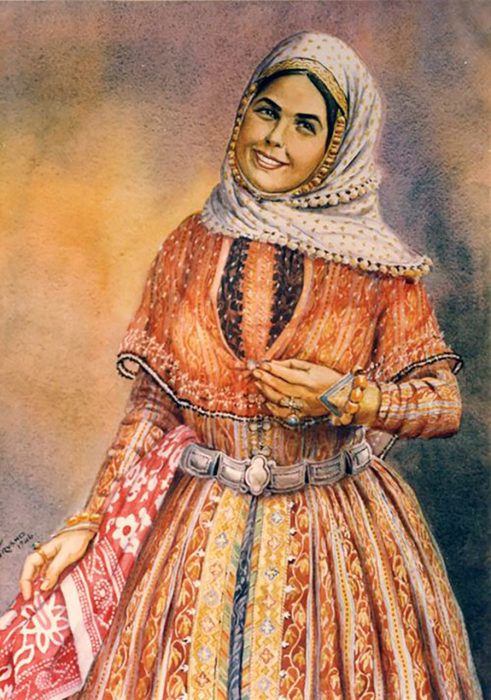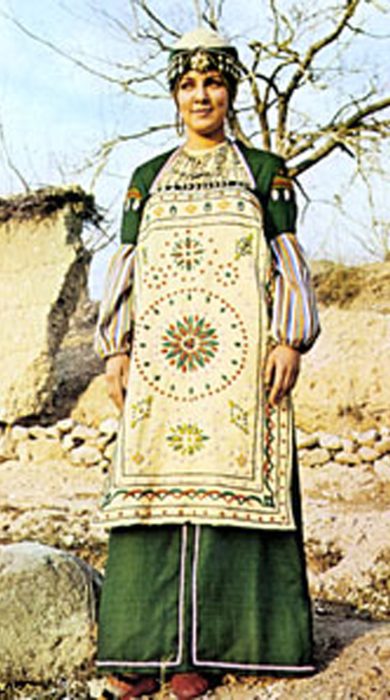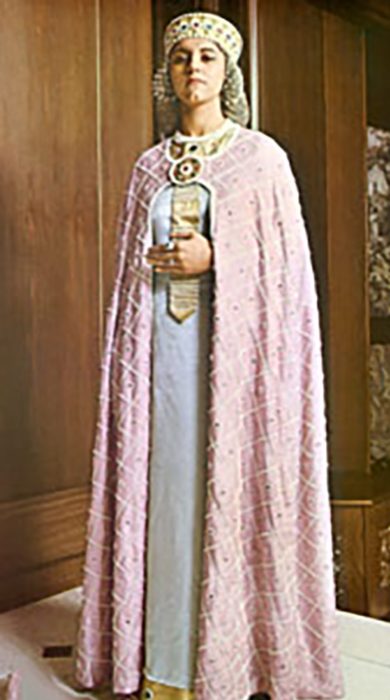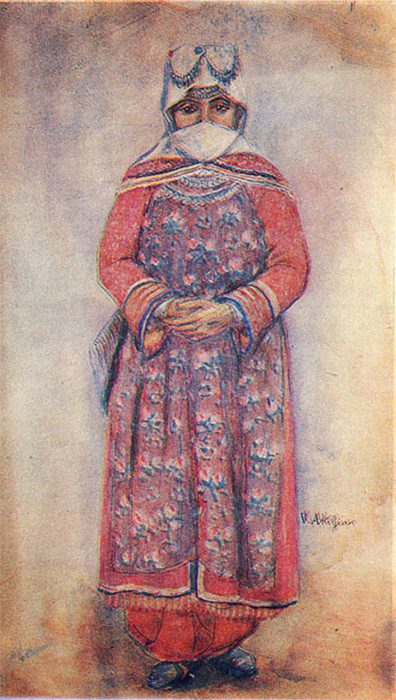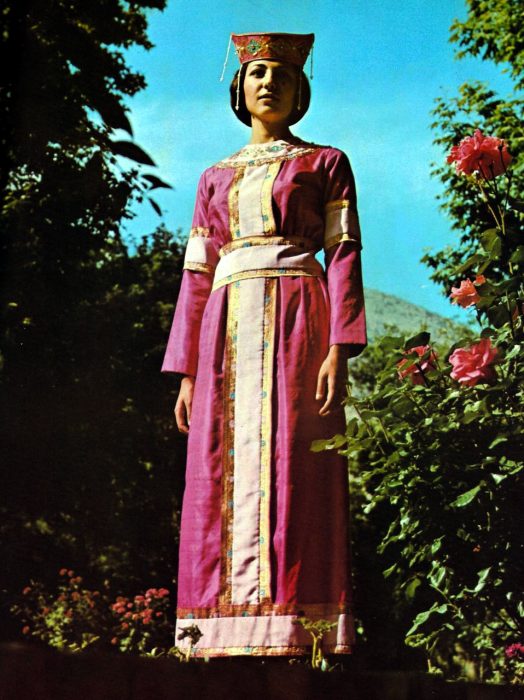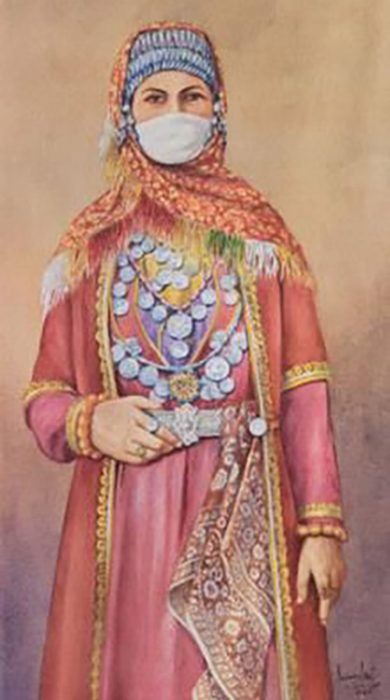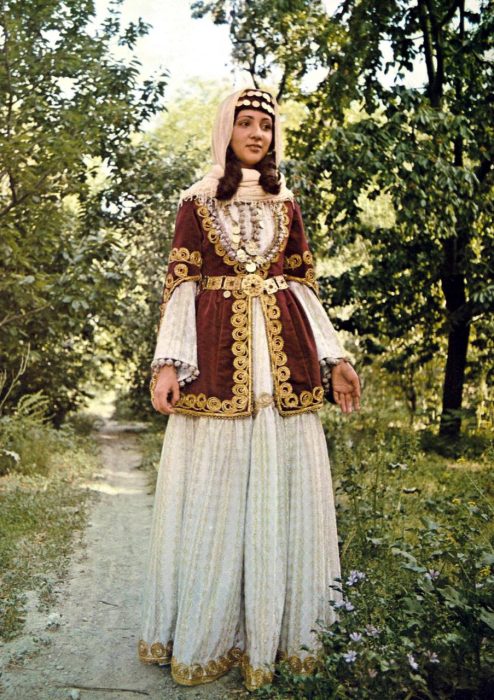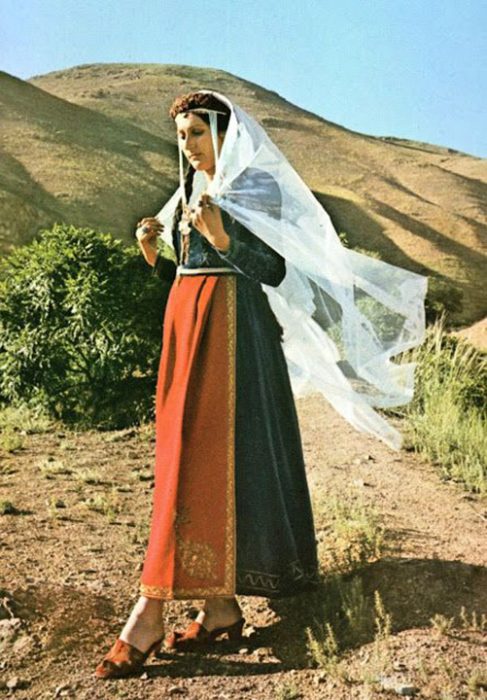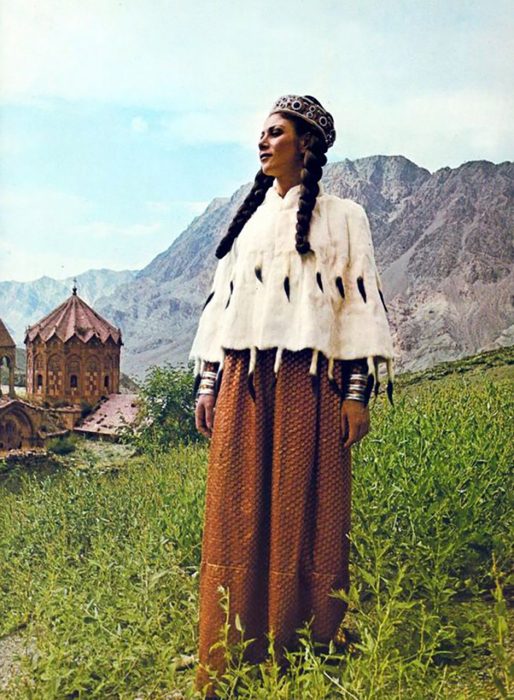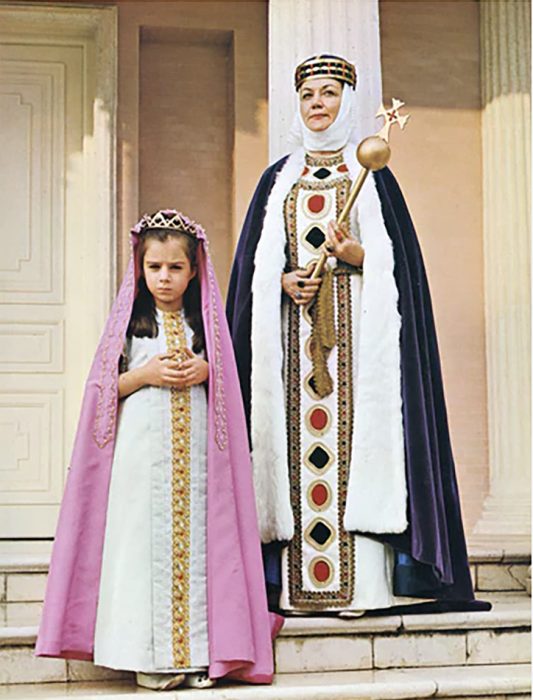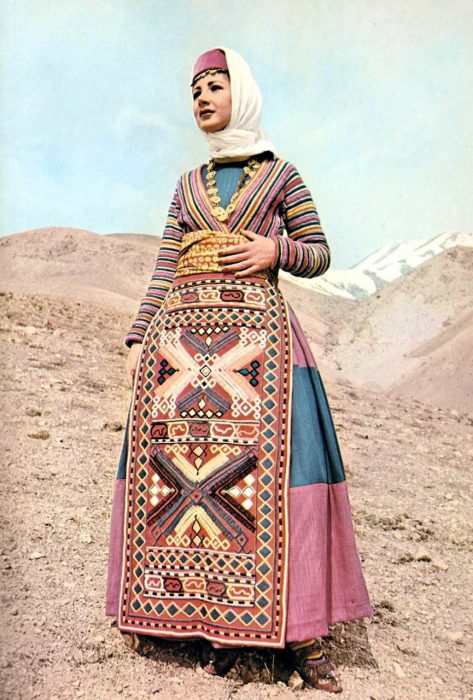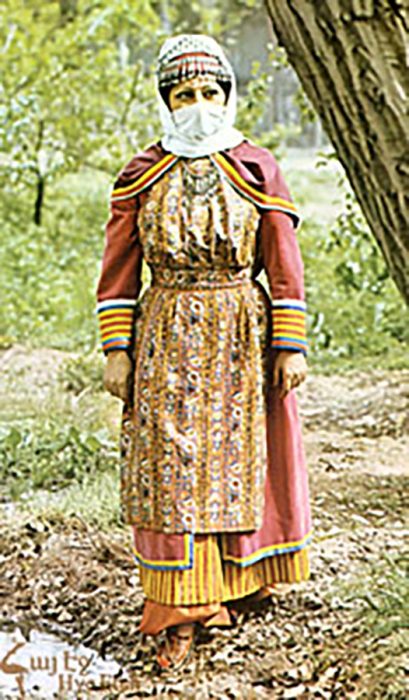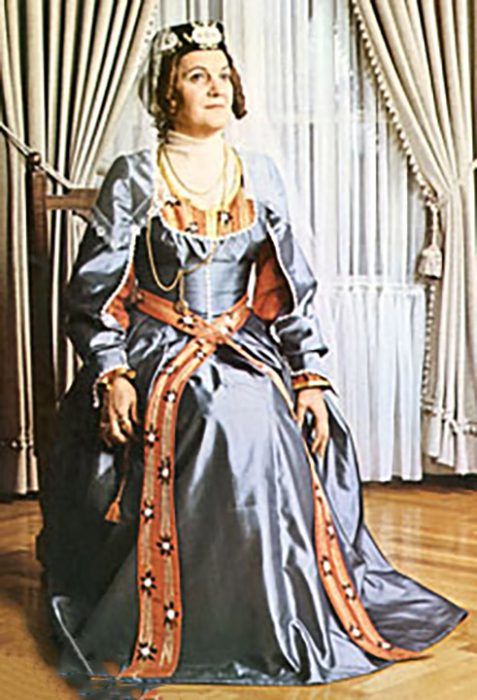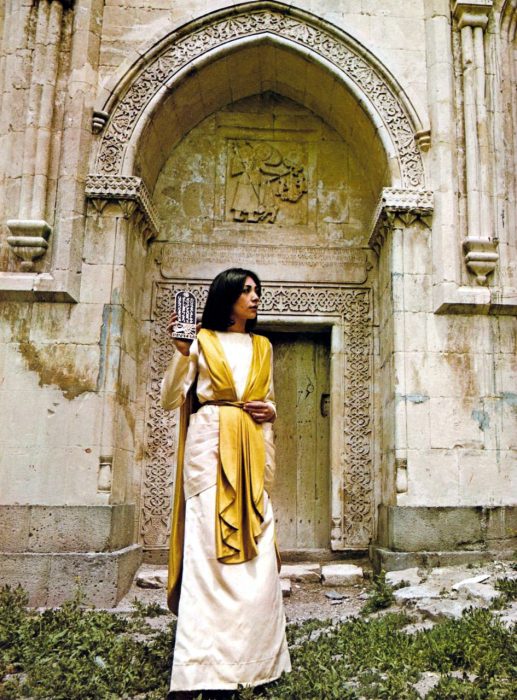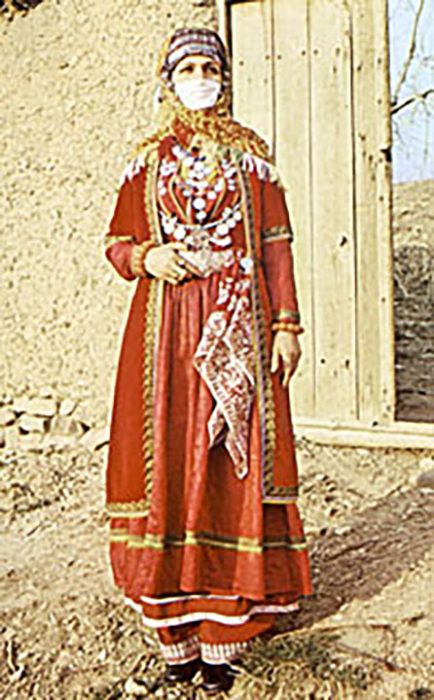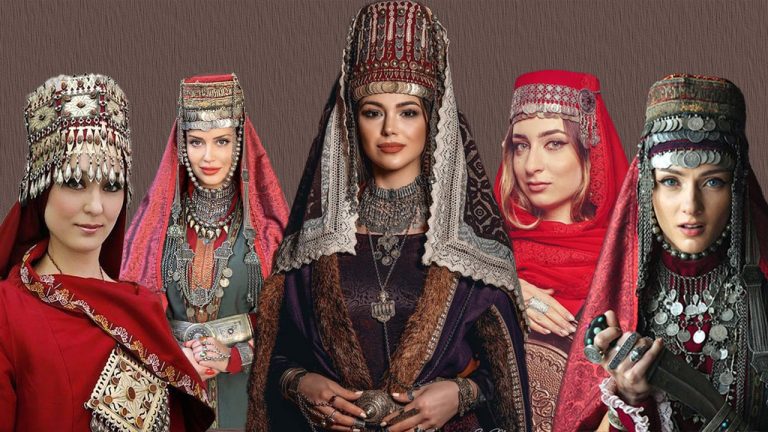
TOURINFO-March 6, 2024- Amidst the diverse landscapes of our world, nations weave their history, values, and pride into the intricate fabrics and designs of their traditional attire. Within Armenia’s windswept mountains and lush valleys, a nation steeped in ancient tales and traditions, the Taraz stands as an emblem of cultural heritage and identity.
More than mere clothing, the Taraz serves as a canvas of cultural expression, embodying the enduring spirit of the Armenian people and their storied past. Rooted in centuries of tradition, its complexity mirrors the nuances of Armenia’s multi-dialectical language, weaving together threads of history, symbolism, and artistry.
Symbolism of Colors and Regional Variations: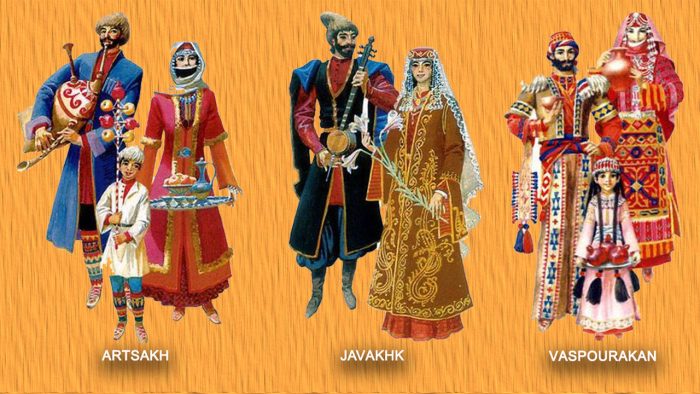 The Armenian Taraz is a luminous testament to the nation’s distinctive mindset and rich cultural tapestry. Its vibrant colors, deeply rooted in philosophical significance, reflect the elemental forces of earth, water, air, and fire. Apricot, revered as Armenia’s national fruit, symbolizes prudence and wisdom, while hues of red embody courage and martyrdom, echoing the resilience of the Armenian spirit across generations. Blue, evoking the boundless sky, represents heavenly justice, while white signifies purity and spiritual enlightenment.
The Armenian Taraz is a luminous testament to the nation’s distinctive mindset and rich cultural tapestry. Its vibrant colors, deeply rooted in philosophical significance, reflect the elemental forces of earth, water, air, and fire. Apricot, revered as Armenia’s national fruit, symbolizes prudence and wisdom, while hues of red embody courage and martyrdom, echoing the resilience of the Armenian spirit across generations. Blue, evoking the boundless sky, represents heavenly justice, while white signifies purity and spiritual enlightenment.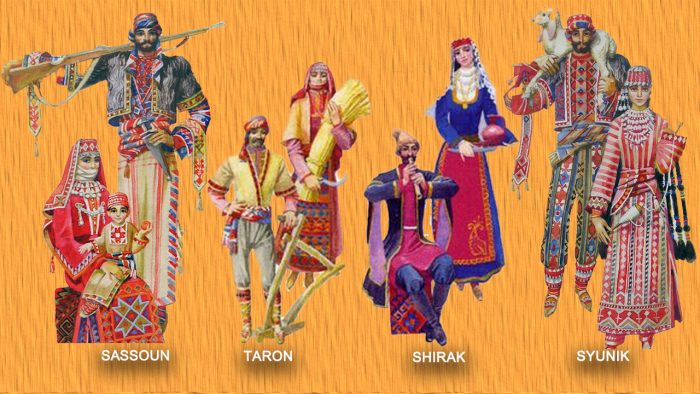 These symbolic colors are intricately woven into the fabric of Armenian costumes, each province distinguished by its unique palette and ornamentation. From the rhythmic motifs of Van-Vaspurakan to the elaborate embroideries of Karin and the rich hues of Shirak and Syunik-Artsakh, Armenian attire reflects a diversity of regional styles and traditions.
These symbolic colors are intricately woven into the fabric of Armenian costumes, each province distinguished by its unique palette and ornamentation. From the rhythmic motifs of Van-Vaspurakan to the elaborate embroideries of Karin and the rich hues of Shirak and Syunik-Artsakh, Armenian attire reflects a diversity of regional styles and traditions. Historical Evolution:
Historical Evolution:
Armenian attire epitomizes a dynamic interplay of cultural exchange and indigenous tradition across historical epochs.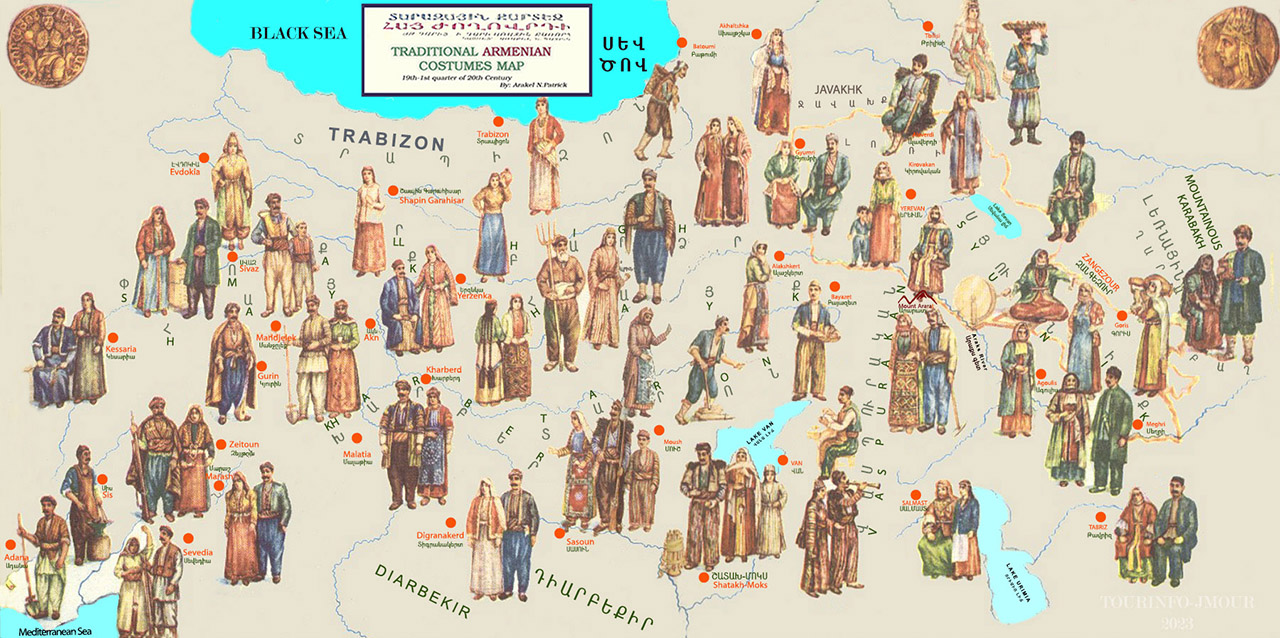
- Ancient Period (900–600 BCE): The Urartian, predecessors to Armenians, embraced attire reminiscent of Assyrian styles, characterized by short-sleeved tunics adorned with intricate metal ornaments. Lion motifs symbolized strength, while stone beads and metal belts served as protective talismans imbued with magical significance.
- Classical Period (600 BCE – 600 CE): As the Kingdom of Armenia emerged, a distinct shift occurred in attire. Men favored fitted trousers paired with the iconic Phrygian cap, later evolving into the balshik, worn by shepherds and religious figures alike.
- Medieval Period (600–1600 CE): Armenian elites during this era embraced clothing reminiscent of Byzantine and Arab royalty, with turbans becoming a prominent feature. Despite the influx of external influences, traditional head coverings, especially for women, have remained steadfast. The evolution of medieval Armenian women’s headdresses was marked by a fusion of ancient Urartian practices and subsequent influences from Byzantine, Arab, Turkish, Tatar, and Kurdish conquerors.
- 19th Century: Amid changing socio-political landscapes and increased interaction with Western cultures, Armenian attire adapted. Traditional garments endured, with a resurgence of interest fueled by cultural pride and nationalism.
- Contemporary Era: Nowadays, contemporary Armenian fashion blends traditional elements with modern influences, reflecting cultural resilience and adaptability. While Western styles dominate urban areas, traditional garments hold significance, especially during cultural events and celebrations. Accessories like the papakh and intricate jewelry add cultural flair, while artisanal techniques inspired by Armenian heritage thrive.
Distinctive Styles of Western and Eastern Armenia:
In the Taraz of Western Armenia, spanning regions like Vaspurakan, Bayazet, Upper Hayk, and Cilicia, one finds a rich tapestry of floral and geometric decorations adorning both male and female garments. Particularly striking is the opulence of women’s Taraz in Western Armenia, distinguished by intricate golden or silver embroideries that elevate each ensemble to a symbol of luxury and cultural pride. Meanwhile, men’s attire in Western Armenia reflects a distinct aesthetic, with embroidered elements, sleeveless dresses, and cone-shaped hats adding flair and personality to traditional garments. This stands in contrast to the styles favored in Eastern Armenia, where trousers, short shirts, and caftans are more prevalent among men, and layered ensembles dominate women’s fashion. The Taraz of Western Armenia, with its lavish embroideries and unique adornments, celebrates the region’s rich cultural heritage and artistic traditions. From the intricate patterns to the luxurious materials, each garment tells a story of artistry and creativity, reflecting the resilience and creativity of the Armenian people across generations.
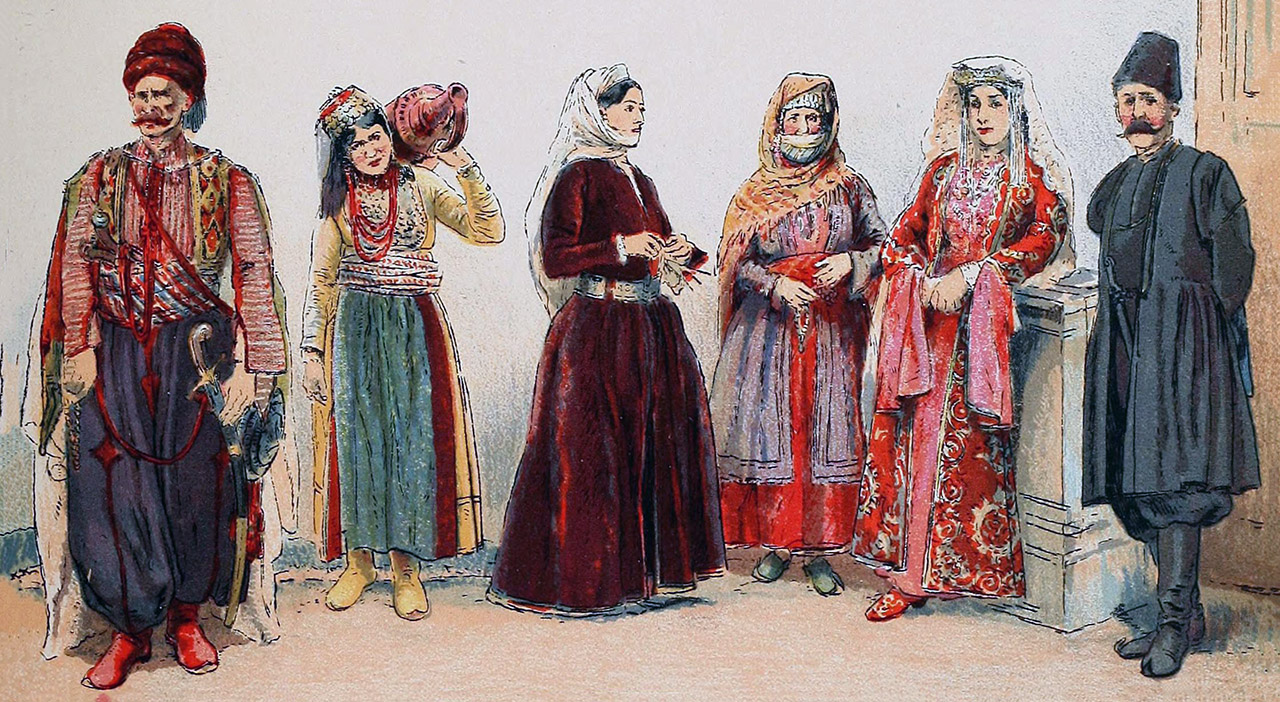
In contrast, Eastern Armenia exhibits a different style of traditional dress. Here, men often favor trousers, short shirts, and caftans, reflecting a more understated and practical approach to attire. Women in Eastern Armenia typically embrace layered ensembles, combining flowing dresses with finely textured trousers underneath. The emphasis is on comfort and functionality, with less emphasis on elaborate embellishments compared to Western Armenian fashion.
Men’s Armenian Taraz: Symbolism and Style:
The traditional Armenian Taraz for men is a meticulously crafted ensemble, rich in symbolism and steeped in history. It comprises two distinct components: the upper ensemble (consisting of a shirt, jacket, and fur coat) and the lower ensemble (comprising trousers and a belt), each with its unique characteristics and significance.
The upper ensemble serves as the cornerstone of Armenian men’s traditional attire, embodying elegance and tradition. At its core lies the intricately embroidered shirt, often made of silk or cotton, featuring long sleeves and a low collar. This shirt, known as shapik, is meticulously adorned with embroidery, particularly on the collars, highlighting the artisanal skills and attention to detail of Armenian artistry.
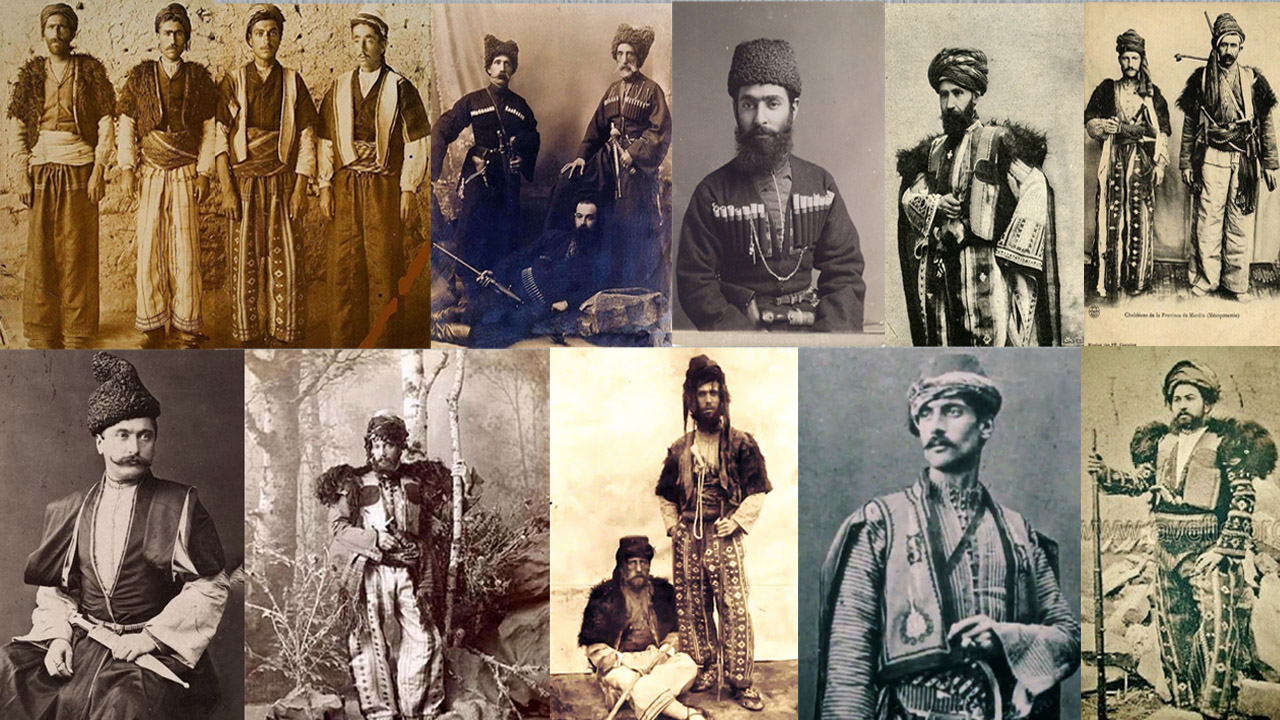 Layered over the shirt is the arkhalukh, a loose coat with a low stand-up collar. Crafted from cotton or silk, the arkhalukh is buttoned from collar to waist, typically fastened with hooks or small buttons. This garment, symbolic of modesty and respectability, is an essential component of the Armenian Taraz, worn even in warmer weather as a sign of adherence to cultural norms and propriety.
Layered over the shirt is the arkhalukh, a loose coat with a low stand-up collar. Crafted from cotton or silk, the arkhalukh is buttoned from collar to waist, typically fastened with hooks or small buttons. This garment, symbolic of modesty and respectability, is an essential component of the Armenian Taraz, worn even in warmer weather as a sign of adherence to cultural norms and propriety.
Completing the upper ensemble is the chukha, a long dark woolen coat with distinctive features such as hanging sleeves and a folded waist. The chukha is typically belted with a narrow fabric or leather, with later iterations featuring decorative silver belts adorned with elaborate buckles. These belts, often considered a form of “capital for burial,” symbolize maturity, wisdom, and social standing within the community.
The lower ensemble of the Armenian Taraz is equally significant, emphasizing comfort, functionality, and regional identity. Central to this ensemble is the shalvar, wide trousers crafted from dark wool or cotton. These trousers feature a wide seam at the waist and are often adorned with a patterned woven tie known as hondzhan, which is passed through the seam and tied at the front with tassels hanging from the ends.
 In Western Armenian regions, variations of the Taraz include the substitution of the arkhalukh with a vest called elak, worn over a shirt intricately embroidered on the front and sleeves. A short jacket known as bachkon, featuring whole-cut sleeves and a simple design devoid of fasteners, further complements this ensemble.
In Western Armenian regions, variations of the Taraz include the substitution of the arkhalukh with a vest called elak, worn over a shirt intricately embroidered on the front and sleeves. A short jacket known as bachkon, featuring whole-cut sleeves and a simple design devoid of fasteners, further complements this ensemble.
During colder months, men would don large fur coats, with options ranging from tanned sheepskin to shorter sleeveless jackets made of goat fur. These coats provide warmth and protection from the elements while maintaining the elegance and sophistication inherent in the Armenian Taraz. Accessories such as hats and footwear also play a significant role in completing the ensemble. From fur hats in Eastern Armenia to knitted and woven styles in Western regions, hats reflect both regional climate and cultural preferences. Footwear varies from rough rawhide leather sandals worn with woolen patterned socks in rural areas to low-heeled soler shoes with upturned toes in urban centers, each pair a reflection of tradition, artisanship, and practicality.
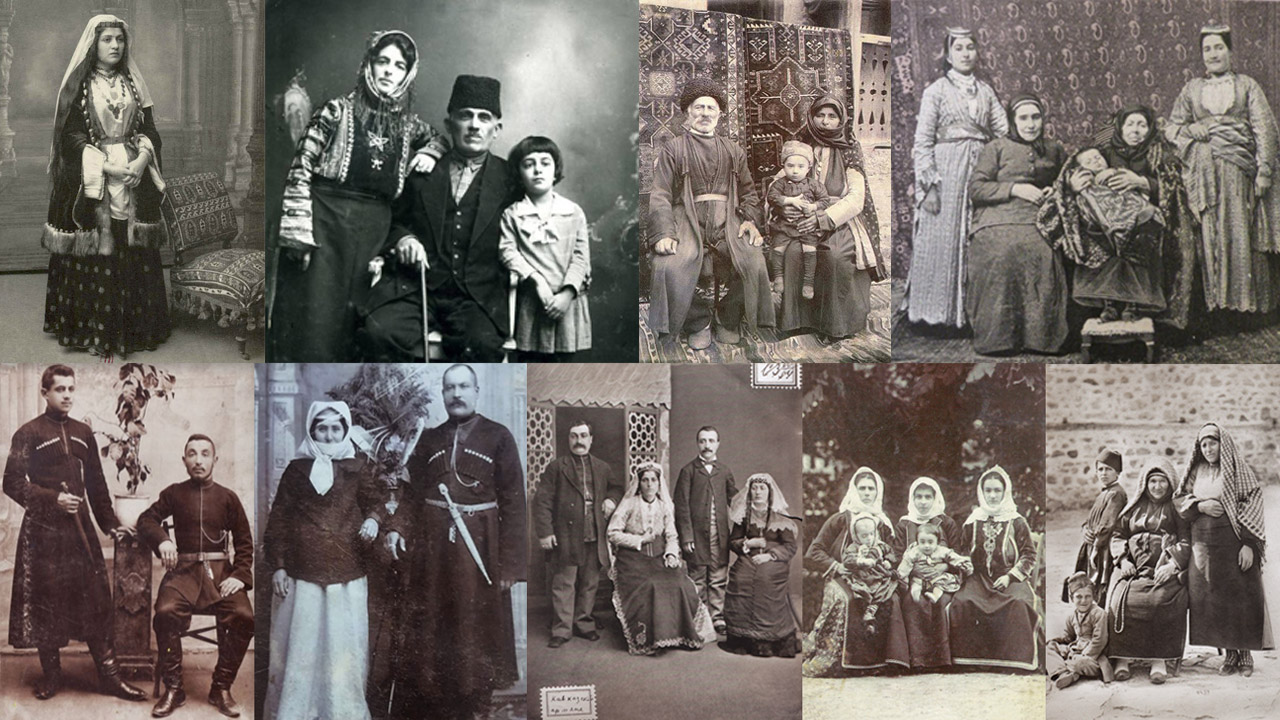 The Armenian Taraz for men transcends its role as mere clothing; it stands as a tangible embodiment of cultural identity, tradition, and social status. Woven meticulously, each thread tells a story, carrying with it the weight of centuries of heritage and symbolism. Beyond its material form, the Taraz serves as a timeless beacon, illuminating the essence of Armenian culture and values, resonating with significance that transcends generations.
The Armenian Taraz for men transcends its role as mere clothing; it stands as a tangible embodiment of cultural identity, tradition, and social status. Woven meticulously, each thread tells a story, carrying with it the weight of centuries of heritage and symbolism. Beyond its material form, the Taraz serves as a timeless beacon, illuminating the essence of Armenian culture and values, resonating with significance that transcends generations.
Women’s Armenian Taraz: Elegance and Diversity:
The Women’s Armenian Taraz is a mesmerizing tapestry of elegance and diversity, offering a vast array of outerwear meticulously crafted from sumptuous materials such as satin, silk, and velvet. Each garment is a masterpiece of artisanship, adorned with intricate embroidery that displays the unparalleled skill and creativity of Armenian artistry. From the bustling streets of Yerevan to the remote villages nestled in the Caucasus Mountains, the Taraz embodies the essence of Armenian culture and tradition. At the pinnacle of society, the Taraz is elevated with meticulous detailing, often featuring elaborate motifs woven with fine gold and silver threads. These embellishments not only enhance the beauty of the attire but also serve as symbols of wealth, status, and cultural pride. Accompanying these stunning ensembles are cherished heirloom jewelry pieces, passed down through generations, adding layers of historical significance and personal connection to the attire. Each necklace, bracelet, and earring carries with it a story of family heritage, further enriching the tapestry of Armenian identity.
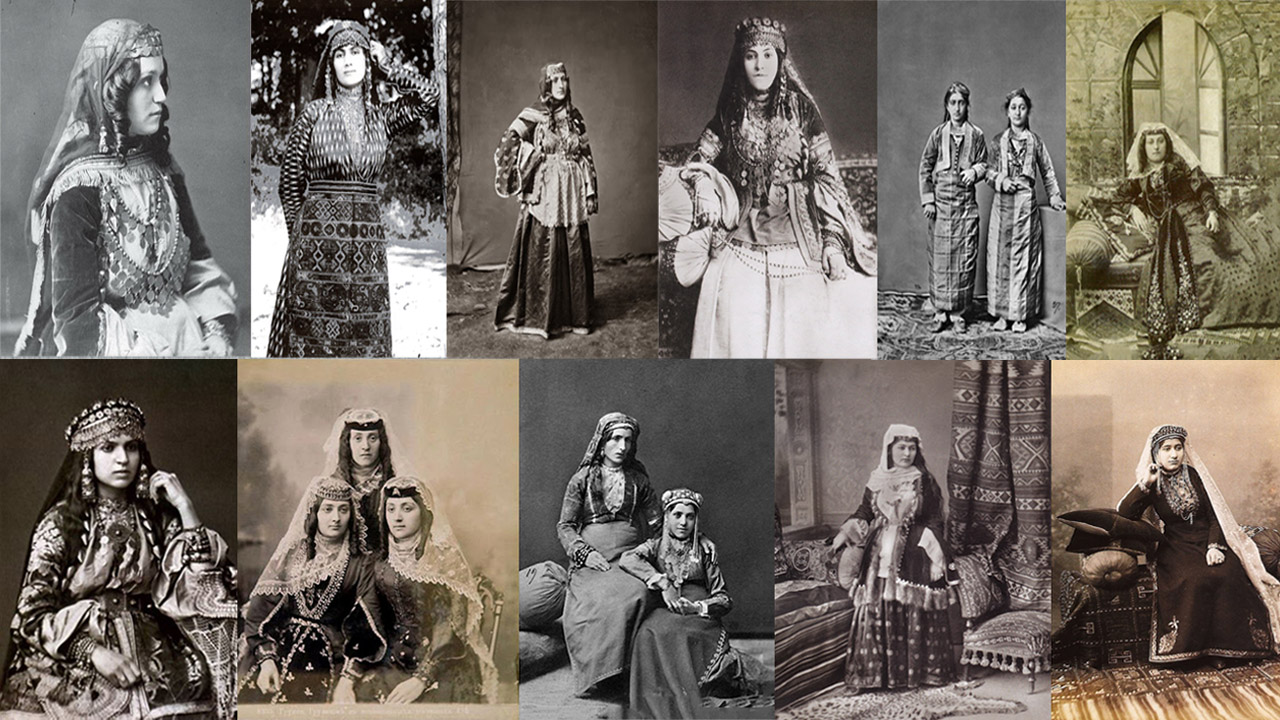 Regional variations across Armenia further enhance the diversity of the Women’s Taraz, reflecting the unique cultural landscapes and traditions of different areas. In Eastern Armenia, layered ensembles are favored, with flowing red dresses elegantly paired with finely textured trousers underneath. This style not only provides warmth during the cold winters but also creates a harmonious balance of style and sophistication. The intricate embroidery on these garments often incorporates traditional Armenian motifs, such as pomegranates and grapevines, symbolizing fertility, prosperity, and the enduring spirit of the Armenian people.
Regional variations across Armenia further enhance the diversity of the Women’s Taraz, reflecting the unique cultural landscapes and traditions of different areas. In Eastern Armenia, layered ensembles are favored, with flowing red dresses elegantly paired with finely textured trousers underneath. This style not only provides warmth during the cold winters but also creates a harmonious balance of style and sophistication. The intricate embroidery on these garments often incorporates traditional Armenian motifs, such as pomegranates and grapevines, symbolizing fertility, prosperity, and the enduring spirit of the Armenian people.
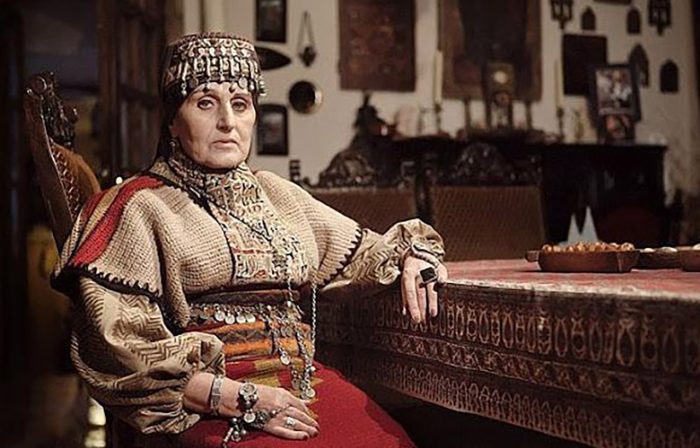
Meanwhile, in Western Armenia, a subtly distinct aesthetic emerges, characterized by pristine white shirts, intricately embroidered aprons, and other unique decorative elements that speak to the region’s cultural heritage. The Taraz in Western Armenia reflects influences from neighboring countries such as Turkey and Iran, resulting in a fusion of styles that is both captivating and distinctively Armenian.
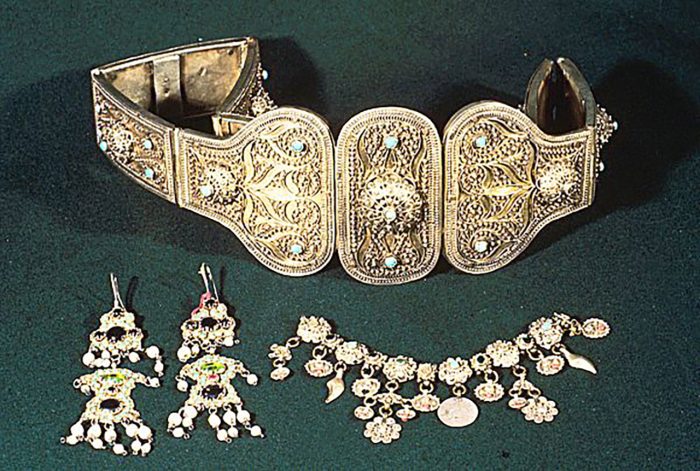 No Taraz ensemble is complete without essential accessories that add a finishing touch of grace and allure. Necklaces adorned with precious stones and silver bracelets delicately enhance the beauty of the attire, reflecting the wearer’s individuality and enhancing the overall elegance of the ensemble. These accessories are not merely decorative but are imbued with symbolism and meaning, serving as expressions of identity, faith, and cultural belonging.
No Taraz ensemble is complete without essential accessories that add a finishing touch of grace and allure. Necklaces adorned with precious stones and silver bracelets delicately enhance the beauty of the attire, reflecting the wearer’s individuality and enhancing the overall elegance of the ensemble. These accessories are not merely decorative but are imbued with symbolism and meaning, serving as expressions of identity, faith, and cultural belonging.
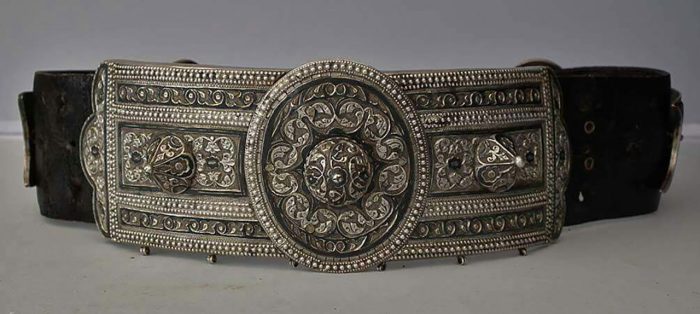 In essence, the Women’s Armenian Taraz is more than just clothing; it is a living embodiment of cultural identity, tradition, and individual expression. Each garment tells a story, weaving together threads of history and heritage, and preserving the rich tapestry of Armenian culture for generations to come. Through its elegance and diversity, the Taraz continues to captivate hearts and minds, celebrating the Armenian spirit’s resilience, creativity, and beauty.
In essence, the Women’s Armenian Taraz is more than just clothing; it is a living embodiment of cultural identity, tradition, and individual expression. Each garment tells a story, weaving together threads of history and heritage, and preserving the rich tapestry of Armenian culture for generations to come. Through its elegance and diversity, the Taraz continues to captivate hearts and minds, celebrating the Armenian spirit’s resilience, creativity, and beauty.
Embroidered Fabric, Footwear, Headwear, and Jewelry:
Embroidered fabric, integral to the national costume, held ritualistic and protective significance beyond aesthetics. Believed to offer protection against malevolent forces, it added cultural and spiritual layers to the ensemble.
 Armenian traditional dress has long been distinguished by the integral presence of leather footwear, known as “trekh,” which was essential attire for both men and women. Alongside these shoes were intricately woven socks, such as Jorabs and gulpas, which held significant cultural value. This footwear was not only utilitarian but also emblematic of Armenian identity and heritage, with each pair reflecting regional nuances and artisanal techniques passed down through generations.
Armenian traditional dress has long been distinguished by the integral presence of leather footwear, known as “trekh,” which was essential attire for both men and women. Alongside these shoes were intricately woven socks, such as Jorabs and gulpas, which held significant cultural value. This footwear was not only utilitarian but also emblematic of Armenian identity and heritage, with each pair reflecting regional nuances and artisanal techniques passed down through generations.

Beyond their practical function, these leather treasures were adorned with a plethora of accessories that heightened their aesthetic appeal and cultural significance. Intricately crafted crosses, often heirlooms passed through generations, served as not only symbols of faith but also carried deep familial and spiritual meaning. Similarly, amulets, intricately designed and sometimes containing verses from sacred texts, were believed to protect the wearer from harm and malevolent forces, reflecting the fusion of belief systems within Armenian culture.
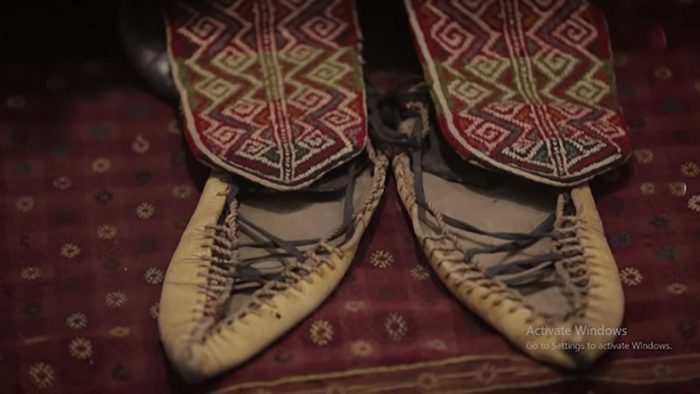
From ancient times, footwear has played a crucial role in Armenian attire, with both men’s and women’s shoes showcasing remarkable similarities. Knitted patterned socks, such as Jorabs and gulpas, along with men’s leggings, have been part of Armenian footwear since the Urartian period, occupying a significant place in traditional Armenian dress. These socks were often densely knitted from region-specific wool, with each area boasting its favorite patterns and colors. Throughout history, footwear also carried social and political significance. During the Ottoman Empire, Armenians and Jews were mandated to wear blue or purple shoes to denote their minority status. Later, Armenians were required to wear red shoes as a means of identification with the Ottomans.
Headwear:
The Kot, a traditional Armenian headpiece worn by women, is a testament to the country’s rich cultural heritage. Evolving over centuries, its design has changed while retaining its significance and iconic character.
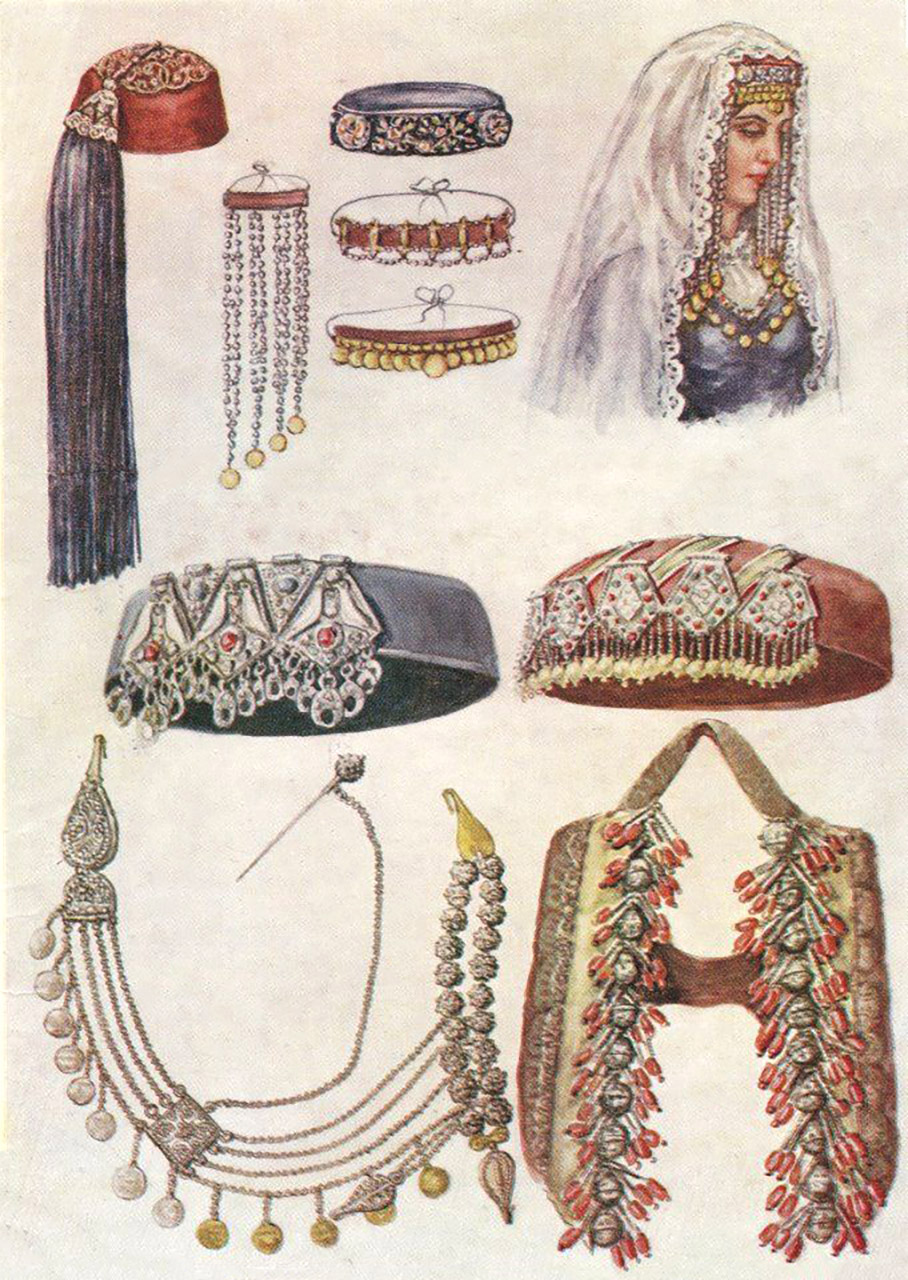 Both men and women once donned the Arakhchi, a flat-top skullcap headdress. Crafted from textiles such as tirma wool and silk, the Arakhchi held cultural significance, especially among freedom fighters who wore a distinctive red variant draped with a bandana adorned with tinsel to identify themselves.
Both men and women once donned the Arakhchi, a flat-top skullcap headdress. Crafted from textiles such as tirma wool and silk, the Arakhchi held cultural significance, especially among freedom fighters who wore a distinctive red variant draped with a bandana adorned with tinsel to identify themselves.
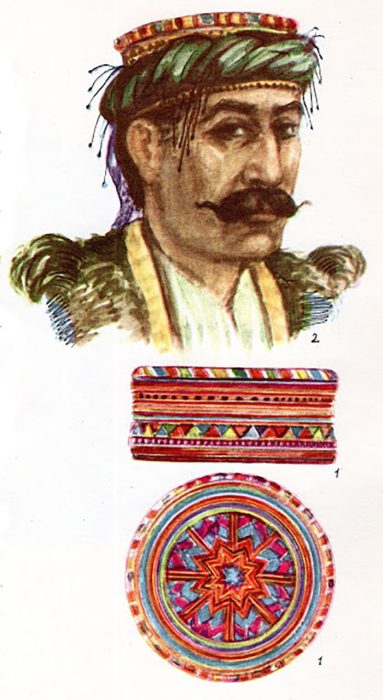 While the Arakhchi could be worn alone, it also served as a foundation for other headpieces like the Papakhi, turban, or Kalaghai. Women’s Arakhchis, dating back to the sixteenth century, often lacked a special sack intended for braids. However, by the eighteenth century, it became one of the most widespread headgears among women, adorned with intricately braided woolen threads, silver balls, and brushes.
While the Arakhchi could be worn alone, it also served as a foundation for other headpieces like the Papakhi, turban, or Kalaghai. Women’s Arakhchis, dating back to the sixteenth century, often lacked a special sack intended for braids. However, by the eighteenth century, it became one of the most widespread headgears among women, adorned with intricately braided woolen threads, silver balls, and brushes.
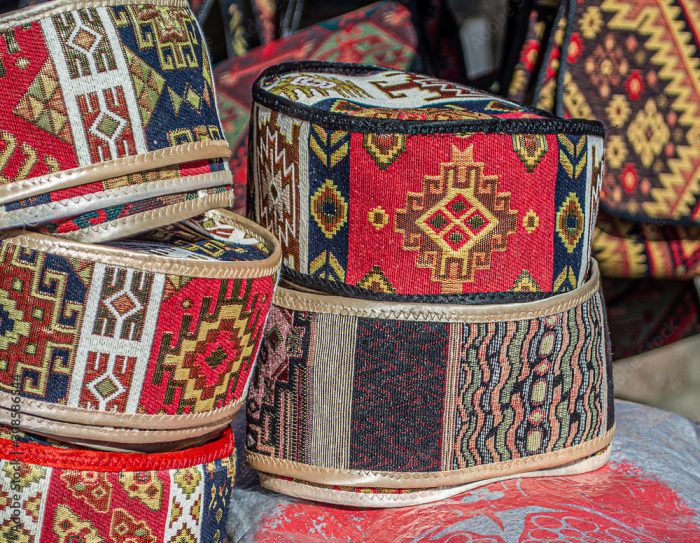
The elaborate women’s headgear boasted a wealth of adornments, including silver jewelry, felt hats resembling fezka, and hanging hangers known as eresnots. In many regions, silver flats embellished with minted flowers, angels, and sunlight were sewn onto the felt, adding to its opulence.
 Upon marriage, women would often adorn themselves with a red hat made of the thinnest felt, featuring a long brush of purple or blue twisted silk threads, known as “kotik” in southern regions and “vard” (meaning rose) in Karin and Shirak.
Upon marriage, women would often adorn themselves with a red hat made of the thinnest felt, featuring a long brush of purple or blue twisted silk threads, known as “kotik” in southern regions and “vard” (meaning rose) in Karin and Shirak.
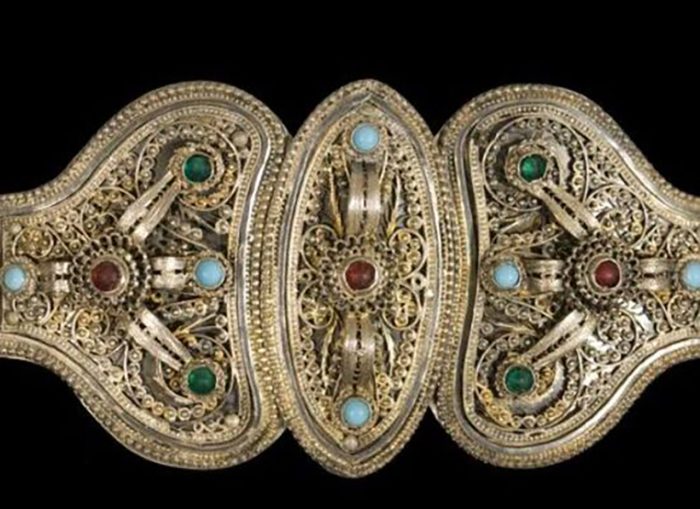
This intricate ensemble was further complemented by an array of jewelry, including necklaces, pendants, bracelets, rings, and a silver or gold-plated belt with a meticulously crafted buckle. These treasures were particularly cherished by affluent Armenian women, especially within trade and craft communities across Western Armenia and Transcaucasia.
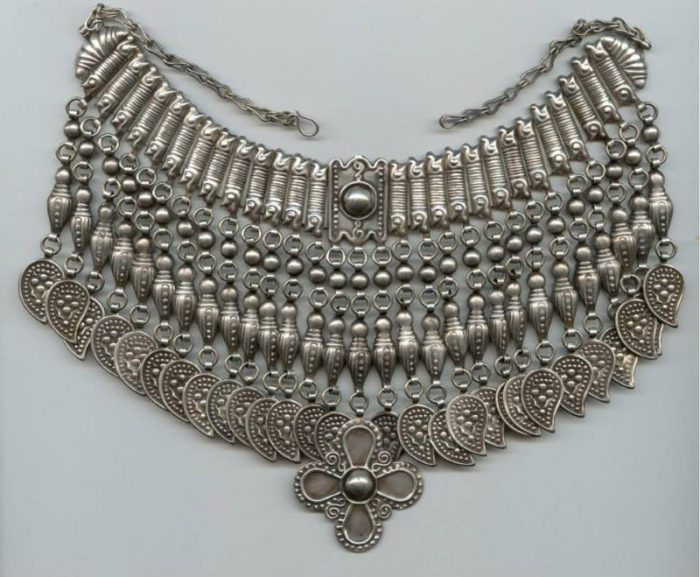 In sum, the Kot and Arakhchi symbolize not only the aesthetic elegance of Armenian attire but also the enduring pride and cultural legacy of its people, serving as a vivid expression of tradition and identity across generations.
In sum, the Kot and Arakhchi symbolize not only the aesthetic elegance of Armenian attire but also the enduring pride and cultural legacy of its people, serving as a vivid expression of tradition and identity across generations.
Traditional Jewelry:
Traditional Armenian jewelry is characterized by intricate artistry, religious symbolism, and nature-inspired motifs. Key features include filigree work, enamelwork, and the use of precious metals and gemstones. Regional variations in style and materials add to the richness of Armenian jewelry traditions. Examples include Dzi beads, Taraz headdresses, Khoskhar earrings, and Vanki arm bracelets. These pieces serve as both adornments and expressions of Armenian culture and heritage.
In conclusion, Armenian dress throughout history embodies a dynamic fusion of indigenous traditions, regional influences, and evolving societal norms. This rich tapestry of cultural heritage continues to resonate in contemporary Armenian culture, serving as a vibrant testament to the resilience and adaptability of the Armenian people. From ancient times to the present day, Armenian attire has evolved while retaining its essence, reflecting the diverse landscapes, historical narratives, and artistic expressions that define the Armenian identity. Through its intricate designs, symbolic adornments, and timeless elegance, Armenian dress remains a cherished emblem of tradition, pride, and cultural heritage for generations to come.
TOURINFO-JUANITA MOURADIAN

